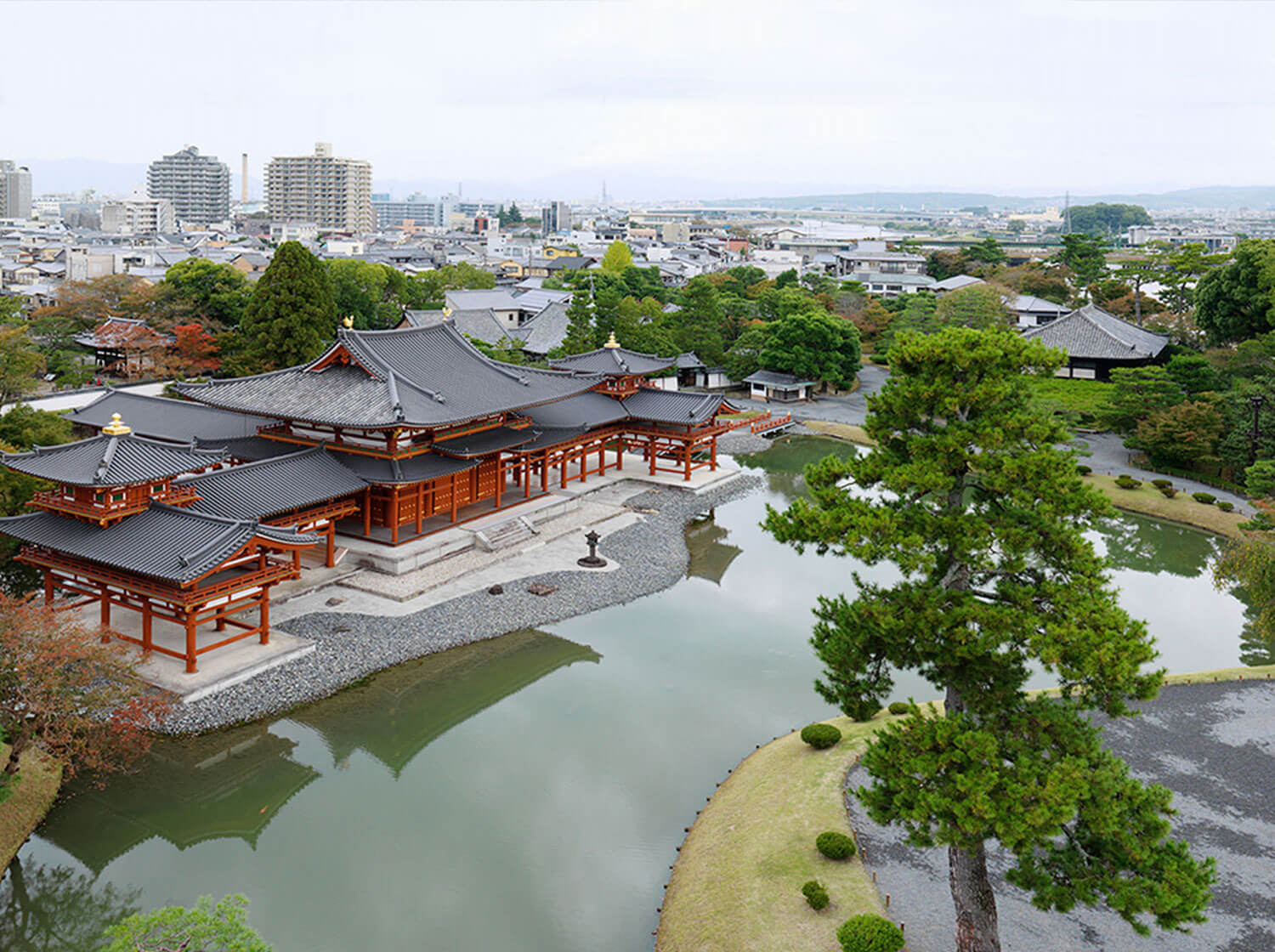Byodoin Garden

Byodoin Temple garden is the finest surviving example of the Jodo Garden style that flourished during the Heian period (794–1185). Jodo gardens attempted to represent on earth the Pure Land (Jodo) of Amida (Sk. Amitabha) Buddha. The Phoenix Hall, other buildings of the compound, the Aji-ike Pond, Uji River and the mountains behind all came together to create a vivid representation of the perfect realm of the Pure Land to which the aristocrats of the Heian period so devoutly aspired. The garden also serves as an idealized expression of the true relationship between man and nature.
A garden of this kind is described as ideal in the Sakuteiki (thirteenth century), considered to be one of the world’s oldest works on the creation of gardens. This manual is thought to have been written by Tachibana no Toshitsuna, the second son of the Fujiwara no Yorimichi who transformed the villa into a temple in 1052. It is unclear whether Tachibana no Toshitsuna used Byodoin as his model when writing his manual, but the garden and buildings are very close to the description of the ideal garden that appears in the Sakuteiki. They clearly manifest a strong desire on the part of those who created them to offer a representation here on earth of the distant, celestial Pure Land.
The Byodoin garden is the oldest Jodo garden still remaining from the Heian period and has been designated as both a national Historic Site and Place of Scenic Beauty.

